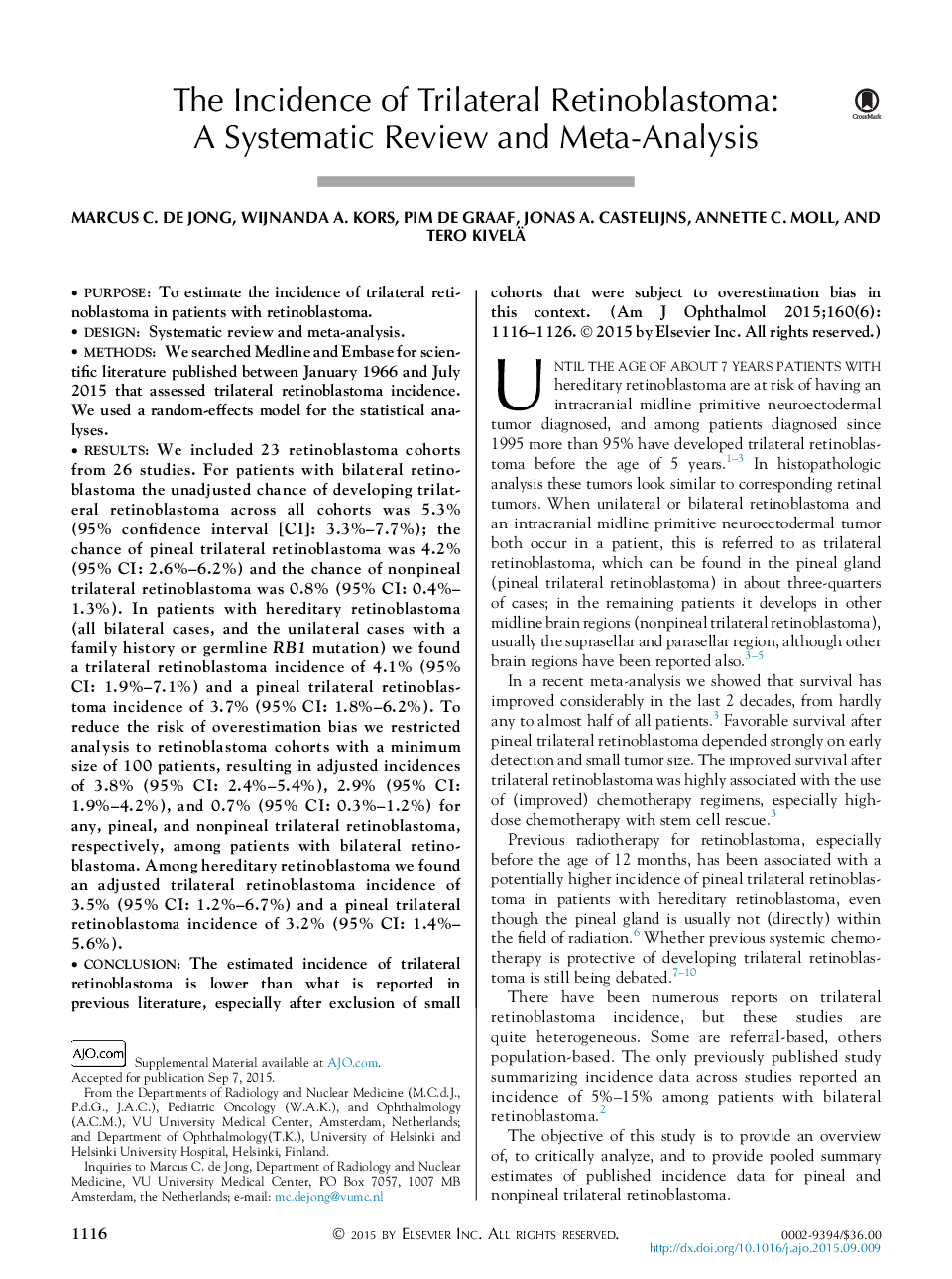| Article ID | Journal | Published Year | Pages | File Type |
|---|---|---|---|---|
| 6194859 | American Journal of Ophthalmology | 2015 | 16 Pages |
PurposeTo estimate the incidence of trilateral retinoblastoma in patients with retinoblastoma.DesignSystematic review and meta-analysis.MethodsWe searched Medline and Embase for scientific literature published between January 1966 and July 2015 that assessed trilateral retinoblastoma incidence. We used a random-effects model for the statistical analyses.ResultsWe included 23 retinoblastoma cohorts from 26 studies. For patients with bilateral retinoblastoma the unadjusted chance of developing trilateral retinoblastoma across all cohorts was 5.3% (95% confidence interval [CI]: 3.3%-7.7%); the chance of pineal trilateral retinoblastoma was 4.2% (95% CI: 2.6%-6.2%) and the chance of nonpineal trilateral retinoblastoma was 0.8% (95% CI: 0.4%-1.3%). In patients with hereditary retinoblastoma (all bilateral cases, and the unilateral cases with a family history or germline RB1 mutation) we found a trilateral retinoblastoma incidence of 4.1% (95% CI: 1.9%-7.1%) and a pineal trilateral retinoblastoma incidence of 3.7% (95% CI: 1.8%-6.2%). To reduce the risk of overestimation bias we restricted analysis to retinoblastoma cohorts with a minimum size of 100 patients, resulting in adjusted incidences of 3.8% (95% CI: 2.4%-5.4%), 2.9% (95% CI: 1.9%-4.2%), and 0.7% (95% CI: 0.3%-1.2%) for any, pineal, and nonpineal trilateral retinoblastoma, respectively, among patients with bilateral retinoblastoma. Among hereditary retinoblastoma we found an adjusted trilateral retinoblastoma incidence of 3.5% (95% CI: 1.2%-6.7%) and a pineal trilateral retinoblastoma incidence of 3.2% (95% CI: 1.4%-5.6%).ConclusionThe estimated incidence of trilateral retinoblastoma is lower than what is reported in previous literature, especially after exclusion of small cohorts that were subject to overestimation bias in this context.
